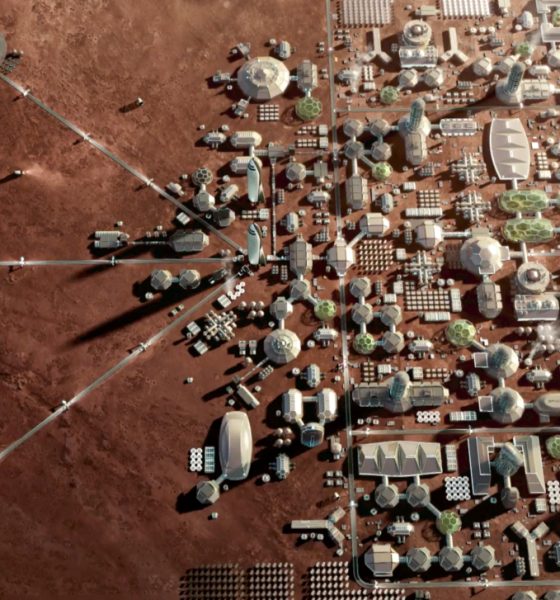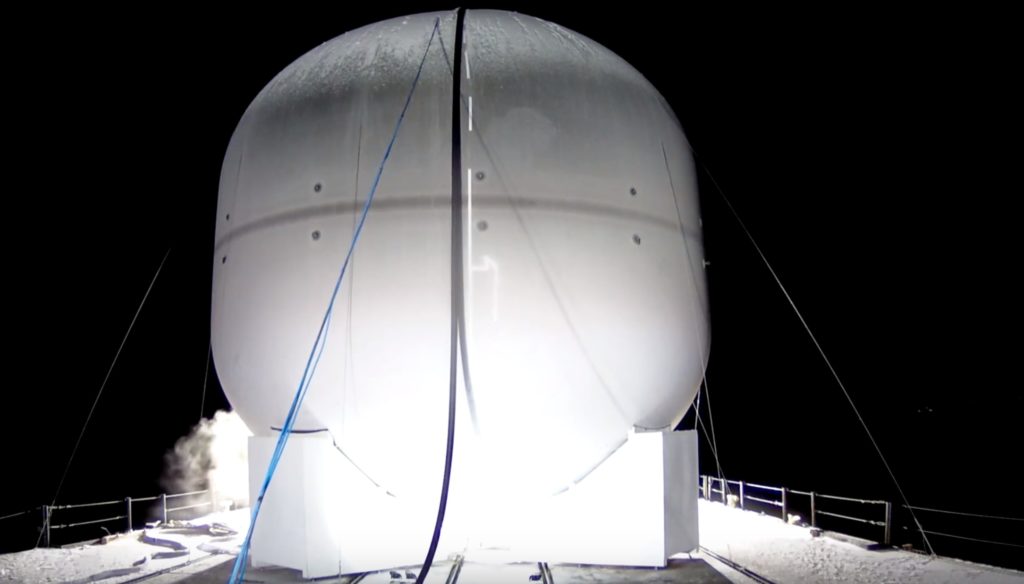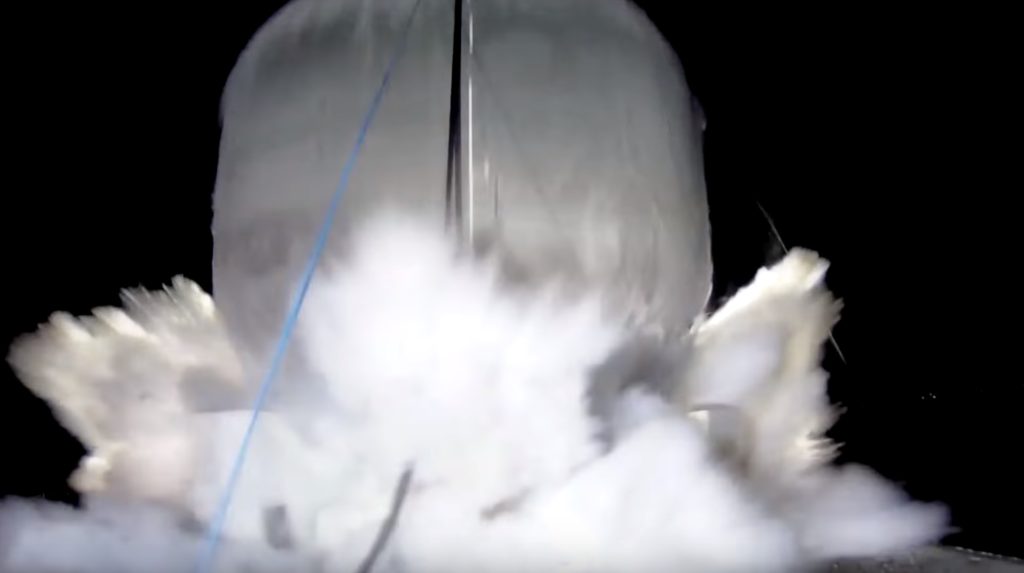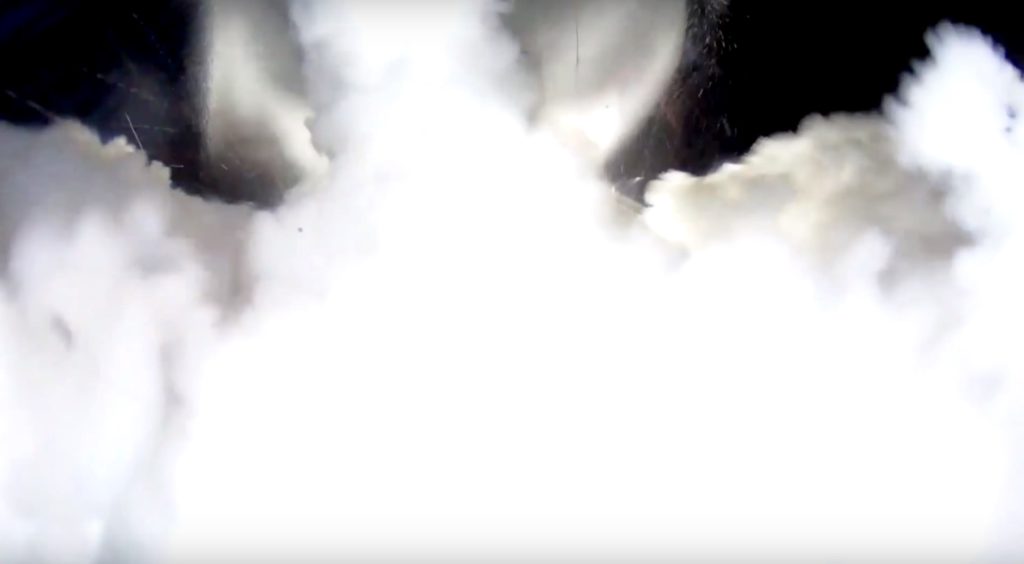

News
Elon Musk and SpaceX won’t be stopped along the road to Mars
If one is to take anything at all away from Elon Musk’s update to SpaceX’s planetary colonization strategy on September 29, it ought to be the tangible and undeniable progress the company has made with real, Mars-focused hardware development.
To take Musk at his word, the general atmosphere pervading the two relevant programs is one of extreme success and confidence. Raptor, the powerful methane-oxygen rocket engine intended to be the workhorse for any larger launch vehicle, has conducted dozens (42, to be specific) of successful hot fires at SpaceX’s McGregor, Texas testing facilities. These ranged from a handful of seconds all the way to 100 seconds in duration, and Musk made it explicitly clear that the only limiting factor to test duration was the size of the tanks of propellant available to fuel the engine. Of crucial importance is the fact that the engine being tested in Texas is a subscale prototype, and is not representative of the final engine. However, SpaceX has since shrunk the final target for operational Raptors, and this means that the current scale is not far off from the final thrust figure. The prototype Raptor is believed to have a thrust of approximately 1,000 kN (Kilonewtons), with slides from Musk’s 2017 presentation pointing to a full scale thrust of 1700 kN, far closer to becoming real than the 3,000 kN figure given at the 2016 IAC.
SpaceX has completed over 1,200 seconds of firing across 42 main Raptor engine tests. pic.twitter.com/EhxbPjd8Cj
— SpaceX (@SpaceX) September 29, 2017
Possibly even more significant is the reported success SpaceX has had with the construction and stress testing of a full-scale carbon fiber liquid oxygen tank, which was tested to a very eventful destruction on Washington state’s Puget Sound. Fans closely followed this series of tests, but information was scarce and the general consensus was that the tank had failed unintentionally during those tests. The fact that Musk claimed that the 12 meter diameter tank was “successfully tested” at high pressures, as well as the confidence he expressed about a uniquely capable “carbon fiber matrix”, suggest that SpaceX have leaped over one of biggest potential hurdles of their larger vehicle plans. Carbon fiber propellant tanks have the potential to make rockets significantly lighter and thus more efficient, particularly if no internal liner of metal is needed to ensure the safety of those carbon fiber tanks. One might remember the difficulties SpaceX had with supercool liquid oxygen, culminating in the Amos-6 mishap that saw carbon fiber helium tanks clash with SpaceX’s then-new supercooled propellant procedures.
- SpaceX’s massive carbon fiber tank being tested on a barge. (SpaceX)
- The tank made a premature attempt to reach orbit as it exploded. (SpaceX)
- Musk said that it flew 300 feet in the air in the controlled failure. (SpaceX)
Through many challenging mistakes, SpaceX has learned the hard way that extra care must be taken when mixing carbon fiber and liquid oxygen. The telltale sign that SpaceX has, however, successfully learned from those mistakes can be found in the company’s aspiration to begin construction of the first BFR cargo ship as early as April of 2018, barely six months from today. Time will tell if they can maintain that aggressive schedule and launch two Mars-bound cargo ships in 2022. The company’s incontrovertible success with the development of Raptor engines and carbon fiber propellant tanks bode extremely well for the future of their planetary colonization efforts.

News
Elon Musk’s Grokipedia surges to 5.6M articles, almost 79% of English Wikipedia
The explosive growth marks a major milestone for the AI-powered online encyclopedia, which was launched by Elon Musk’s xAI just months ago.

Elon Musk’s Grokipedia has grown to an impressive 5,615,201 articles as of today, closing in on 79% of the English Wikipedia’s current total of 7,119,376 articles.
The explosive growth marks a major milestone for the AI-powered online encyclopedia, which was launched by Elon Musk’s xAI just months ago. Needless to say, it would only be a matter of time before Grokipedia exceeds English Wikipedia in sheer volume.
Grokipedia’s rapid growth
xAI’s vision for Grokipedia emphasizes neutrality, while Grok’s reasoning capabilities allow for fast drafting and fact-checking. When Elon Musk announced the initiative in late September 2025, he noted that Grokipedia would be an improvement to Wikipedia because it would be designed to avoid bias.
At the time, Musk noted that Grokipedia “is a necessary step towards the xAI goal of understanding the Universe.”
Grokipedia was launched in late October, and while xAI was careful to list it only as Version 0.1 at the time, the online encyclopedia immediately earned praise. Wikipedia co-founder Larry Sanger highlighted the project’s innovative approach, noting how it leverages AI to fill knowledge gaps and enable rapid updates. Netizens also observed how Grokipedia tends to present articles in a more objective manner compared to Wikipedia, which is edited by humans.
Elon Musk’s ambitious plans
With 5,615,201 total articles, Grokipedia has now grown to almost 79% of English Wikipedia’s article base. This is incredibly quick, though Grokipedia remains text-only for now. xAI, for its part, has now updated the online encyclopedia’s iteration to v0.2.
Elon Musk has shared bold ideas for Grokipedia, including sending a record of the entire knowledge base to space as part of xAI’s mission to preserve and expand human understanding. At some point, Musk stated that Grokipedia will be renamed to Encyclopedia Galactica, and it will be sent to the cosmos.
“When Grokipedia is good enough (long way to go), we will change the name to Encyclopedia Galactica. It will be an open source distillation of all knowledge, including audio, images and video. Join xAI to help build the sci-fi version of the Library of Alexandria!” Musk wrote, adding in a later post that “Copies will be etched in stone and sent to the Moon, Mars and beyond. This time, it will not be lost.”
News
Tesla Model 3 becomes Netherlands’ best-selling used EV in 2025
More than one in ten second-hand electric cars sold in the country last year was a Tesla Model 3.

The Tesla Model 3 became the most popular used electric car in the Netherlands in 2025, cementing its dominance well beyond the country’s new-car market.
After years at the top of Dutch EV sales charts, the Model 3 now leads the country’s second-hand EV market by a wide margin, as record used-car purchases pushed electric vehicles further into the mainstream.
Model 3 takes a commanding lead
The Netherlands recorded more than 2.1 million used car sales last year, the highest level on record. Of those, roughly 4.8%, or about 102,000 vehicles, were electric. Within that growing segment, the Tesla Model 3 stood far ahead of its competitors.
In 2025 alone, 11,338 used Model 3s changed hands, giving the car an 11.1% share of the country’s entire used EV market. That means more than one in ten second-hand electric cars sold in the country last year was a Tesla Model 3, Auto Week Netherlands reported. The scale of its lead is striking: the gap between the Model 3 and the second-place finisher, the Volkswagen ID3, is more than 6,700 vehicles.
Rivals trail as residual values shape rankings
The Volkswagen ID.3 ranked a distant second, with 4,595 used units sold and a 4.5% market share. Close behind was the Audi e-tron, which placed third with 4,236 registrations. As noted by Auto Week Netherlands, relatively low residual values likely boosted the e-tron’s appeal in the used market, despite its higher original price.
Other strong performers included the Kia Niro, the Tesla Model Y, and the Hyundai Kona, highlighting continued demand for compact and midsize electric vehicles with proven range and reliability. No other model, however, came close to matching the Model 3’s scale or market presence.
News
Tesla Model Y Standard Long Range RWD launches in Europe
The update was announced by Tesla Europe & Middle East in a post on its official social media account on X.

Tesla has expanded the Model Y lineup in Europe with the introduction of the Standard Long Range RWD variant, which offers an impressive 657 km of WLTP range.
The update was announced by Tesla Europe & Middle East in a post on its official social media account on X.
Model Y Standard Long Range RWD Details
Tesla Europe & Middle East highlighted some of the Model Y Standard Long Range RWD’s most notable specs, from its 657 km of WLTP range to its 2,118 liters of cargo volume. More importantly, Tesla also noted that the newly released variant only consumes 12.7 kWh per 100 km, making it the most efficient Model Y to date.
The Model Y Standard provides a lower entry point for consumers who wish to enter the Tesla ecosystem at the lowest possible price. While the Model 3 Standard is still more affordable, some consumers might prefer the Model Y Standard due to its larger size and crossover form factor. The fact that the Model Y Standard is equipped with Tesla’s AI4 computer also makes it ready for FSD’s eventual rollout to the region.
Top Gear’s Model Y Standard review
Top Gear‘s recent review of the Tesla Model Y Standard highlighted some of the vehicle’s most notable features, such as its impressive real-world range, stellar infotainment system, and spacious interior. As per the publication, the Model Y Standard still retains a lot of what makes Tesla’s vehicles well-rounded, even if it’s been equipped with a simplified interior.
Top Gear compared the Model Y Standard to its rivals in the same segment. “The introduction of the Standard trim brings the Model Y in line with the entry price of most of its closest competition. In fact, it’s actually cheaper than a Peugeot e-3008 and costs £5k less than an entry-level Audi Q4 e-tron. It also makes the Ford Mustang Mach-E look a little short with its higher entry price and worse range,” the publication wrote.











